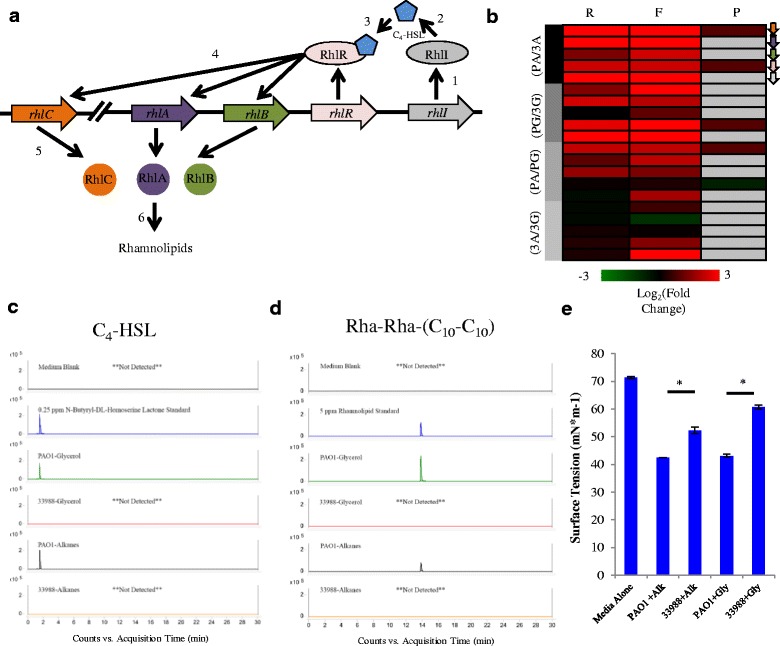Fig. 6.

ATCC 33988 does not use rhamnolipids to improve n-alkane degradation. (a) Rhamnolipid synthesis pathway: RhlI produces the autoinducer N-butyryl-DL-homoserine lactone (C4-HSL.) When levels of C4-HSL reach a threshold limit, they activate the transcription factor RhlR. RhlR increases transcription of the rhamnolipid biosynthetic enzymes RhlA, RhlB and RhlC, which produce rhamnolipids. (b) Heat map representing the fold-change in total RNA (column R), ribosome footprints (column F) and protein (column P) of genes in the rhamnolipid synthesis pathway. All expression values are log2-transformed. Undetected genes are shaded grey. If a gene is not present in ATCC 33988, the log2(fold-change) is given the value 1. LC-MS traces of the autoinducer molecule C4-HSL (c) and a sample di-rhamnolipid (d) in the extracellular media. e Surface tension of each culture. * indicates p < 0.05 for data discussed in the text
